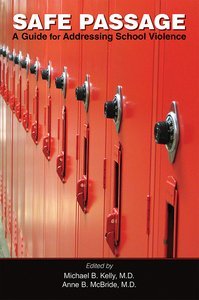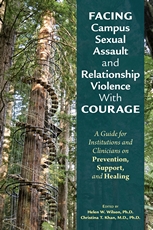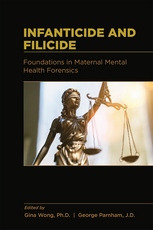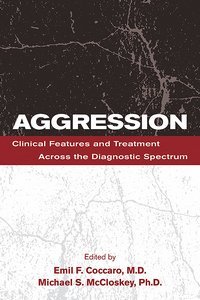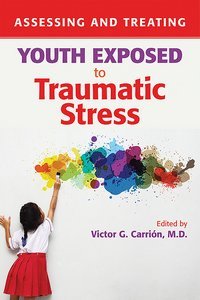Safe Passage
A Guide for Addressing School Violence
View Pricing
Description
Safe Passage: A Guide to Addressing School Violence offers expert perspectives and guidance in understanding, assessing, and addressing school violence. Although the book is designed for child and adolescent forensic psychiatrists and psychologists seeking proficiency in youth violence risk assessment, educators, school administrators, mental health clinicians, other health care professionals who work with children, and interested laypersons will also find the book both practical and illuminating. The editors' approach to school violence is informed by their educational, scholarly, clinical, and forensic work with children and adults who have been disenfranchised through the cumulative effects of poverty, trauma, untreated mental illness, and inadequate access to education. This background has fostered a sensitivity to and understanding of critically important developmental factors that can be passed on generationally, which are explored in depth in the volume. Case vignettes and follow-ups are used liberally to illustrate and illuminate the range of violent situations (e.g., bullying, cyberbullying, gang violence, sexual violence) likely to be encountered, as well as the advantages and disadvantages inherent in various interventions. The authors stress that threat assessment must take individual, school, and community variables into account, a complex but necessary task for mental health professionals and educators who wish to safeguard individuals and society from harm.
This book provides a road map for understanding and addressing violence of all kinds in the school environment:
- The subtyping of aggression is thoroughly explored, with special focus on reward-seeking behaviors and the development of impulse control in adolescents.
- Identifying students at risk for violence or abuse at home is of critical importance. The chapter on danger at home teaches the reader to recognize trauma symptoms and examines the necessary steps toward establishing a trauma-informed or trauma-sensitive school environment.
- In violence risk assessment, every student is evaluated in relation to static risk factors (historical variables that cannot be changed), dynamic risk factors (risk factors that are amenable to change) and protective factors. The authors emphasize that violence risk is characterized along a continuum rather than in binary fashion.
- Case law is cited where relevant throughout the book, providing context for the evolution of school policies toward violence.
- Key points and clinical pearls at the end of each chapter provide convenient summaries of information and help the reader focus on the most important ideas.
Compassionate and comprehensive, Safe Passage: A Guide to Addressing School Violence introduces readers to important concepts pertaining to school violence and serves as a practical guide for mitigating and preventing violence in our schools.
Contents
- Contributors
- Preface
- Foreword
- Part I: Foundations
- Chapter 1. An Introduction to School Violence
- Chapter 2. A Recipe for Violence: Immaturity, Impulsivity, and Aggression
- Chapter 3. Inconvenient Truths: Profiling and Its Limitations
- Chapter 4. Danger at Home: Addressing Violence Outside School
- Chapter 5. Bullying and Cyberbullying
- Chapter 6. Understanding and Addressing Youth Sexual Violence
- Chapter 7. Growing Up in Fear: School Shootings, Attacks, and Gang Violence
- Part II: Threat and Risk Assessment
- Chapter 8. Hostile Intent: The Principles of Threat Assessment
- Chapter 9. Avoiding Danger: The Principles of Violence Risk Assessment
- Part III: Interventions
- Chapter 10. A System of Care: Addressing Aggression and Violence in Schools
- Chapter 11. Assessing and Addressing School Climate
- Chapter 12. Violence and the Media
- Afterword
- Appendix A: Example Threat Assessment Questions for Use With Grade School Students
- Appendix B: Example Threat Assessment Questions for Use With Middle School Students
- Appendix C: Example Threat Assessment Questions for Use With High School and College Students
Contributors
- Amy Barnhorst, M.D.
Jeff Bostic, M.D., Ed.D.
Tim Brennan, M.D., M.P.H.
Ana DiRago, Ph.D.
Sharon Hoover, Ph.D.
Michael B. Kelly, M.D.
Anne B. McBride, M.D.
Sophie Rosseel, M.D.
Suzanne Shimoyama, M.D.
Kelli Marie Smith, M.D.
Amy Toig, B.A.
Marcia Unger, M.D, M.P.H.
Arany Uthayakumar, B.A.
About the Authors
Michael B. Kelly, M.D., is a Senior Psychiatrist at Coalinga State Hospital in Coalinga, California and the Program Director of Coalinga State Hospital's Forensic Psychiatry Fellowship, which is run in collaboration with San Mateo County Behavioral Health and Recovery Services in San Mateo, California.
Anne B. McBride, M.D., is Assistant Professor of Clinical Psychiatry and Program Director, Childand Adolescent Psychiatry Residency at the Department of Psychiatry and Behavioral Sciences at the University of California, Davis in Sacramento, California.
Related Products
Carousel Control - items will scroll by tabbing through them, otherwise arrows can be used to scroll one item at a time
